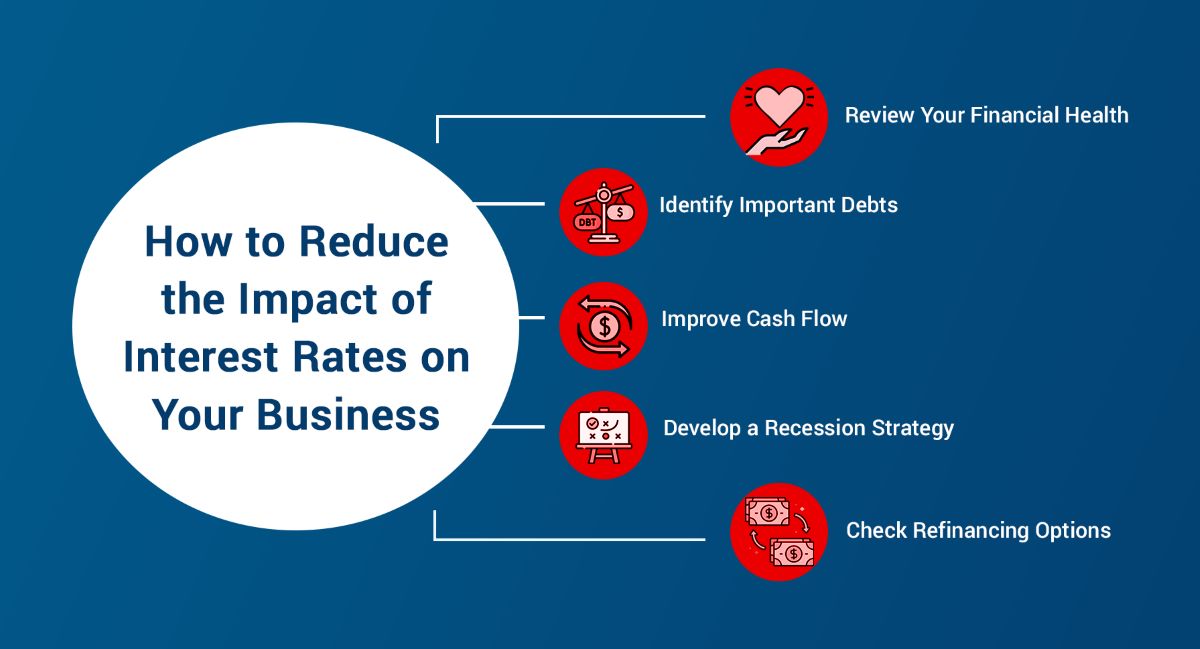

Finance
How Do Interest Rates Affect Annuities?
Published: November 1, 2023
Learn how changes in interest rates can impact annuity products and your financial planning. Find out how interest rates affect annuity returns and payouts in this comprehensive guide from Finance experts.
(Many of the links in this article redirect to a specific reviewed product. Your purchase of these products through affiliate links helps to generate commission for LiveWell, at no extra cost. Learn more)
Table of Contents
Introduction
Welcome to the world of annuities, where financial security and future planning converge. Annuities are powerful financial tools that provide a guaranteed income stream for a specified period or for life. One crucial factor that affects annuities is interest rates. In this article, we will explore how interest rates impact annuities and why they are an essential consideration for annuity buyers.
But before we delve into the intricacies of how interest rates influence annuities, let’s start with a clear definition of what annuities are.
Annuities are financial products offered by insurance companies, designed to help individuals accumulate savings and provide a regular income during retirement. It allows individuals to make a series of payments or a lump sum contribution, which is then invested and grows over time. The accumulated amount is then paid out as periodic income payments, either immediately or at a designated future date.
Now, let’s uncover the connection between interest rates and annuities, and understand how changes in interest rates can impact these financial vehicles.
Definition of Annuities
Annuities are financial products offered by insurance companies that provide individuals with a steady stream of income during their retirement years. They are essentially contracts between the individual and the insurance company, where the individual makes payments or a lump sum contribution to the annuity, and in return, the insurance company promises to make regular payments to the individual either immediately or in the future.
There are different types of annuities, each with its own features and benefits. The three main types of annuities are:
- Immediate Annuities: As the name suggests, immediate annuities start paying out income immediately after the individual makes a lump sum payment to the insurance company. The payments can be made for a certain period or for the rest of the individual’s life.
- Fixed Annuities: Fixed annuities provide a guaranteed rate of return on the individual’s investment. The insurance company invests the individual’s money, and the individual receives a fixed amount of income over a specified period. This type of annuity is popular for individuals who seek stability and a predictable income stream.
- Variable Annuities: Variable annuities, on the other hand, allow individuals to invest in a selection of investment options such as stocks, bonds, or mutual funds. The income generated by variable annuities fluctuates with the performance of these investments, offering the potential for higher returns but also exposing the individual to market risks.
Annuities are often used as part of a retirement strategy, providing individuals with a reliable and regular income source to supplement their other retirement savings, such as pensions and Social Security.
Now that we have a clear understanding of what annuities are, let’s explore how interest rates can impact these financial instruments.
How Interest Rates Impact Annuities
Interest rates play a crucial role in the world of annuities and can have a significant impact on the overall benefits and financial outcomes of these products. Here are a few key ways in which interest rates can influence annuities:
- Annuity Returns: The rate of return or interest credited to an annuity is largely dependent on prevailing interest rates. When interest rates are high, annuity returns tend to be higher as well. This means that individuals who purchase annuities during a period of high interest rates can potentially enjoy greater income payments, enhancing their financial security and retirement lifestyle.
- Investment Performance: Insurance companies typically invest the funds received from annuity holders to generate the income necessary to make the promised payments. These investments are influenced by interest rates. When interest rates rise, the returns on these investments can also increase, resulting in higher income payments for annuity holders. Conversely, when interest rates decline, the investment performance may be negatively affected, leading to lower income payments.
- Longevity Risk: Annuities provide individuals with a fixed income stream for life. As interest rates change, the amount of income that can be generated from a given investment amount may also fluctuate. This creates what’s known as “longevity risk” – the risk that inflation and changing interest rates may erode the purchasing power of the annuity income over time. Individuals who purchase annuities during periods of low interest rates may face a higher risk of their annuity income being outpaced by inflation.
- Opportunity Cost: When interest rates are high, individuals may have alternative investment options that offer higher returns. This creates an opportunity cost for those who choose to allocate their funds to annuities instead. On the other hand, during periods of low interest rates, annuities may become more attractive as they can provide a guaranteed income stream that surpasses alternative investment options.
It’s important to note that the impact of interest rates on annuities varies depending on the type of annuity and the specific terms and conditions of the contract. Fixed annuities, for example, are more directly influenced by interest rates, as their returns are predetermined and guaranteed. Variable annuities, on the other hand, are affected by both interest rates and the performance of the underlying investment options.
Understanding how interest rates impact annuities can help individuals make informed decisions about when to purchase annuities, how to structure their investments, and how to adjust their retirement income strategy based on prevailing interest rates.
Relationship between Interest Rates and Annuity Payments
The relationship between interest rates and annuity payments is a crucial aspect that annuity buyers need to understand. It determines the amount of income individuals will receive from their annuity investments. Here’s how interest rates affect annuity payments:
When interest rates go up, annuity payments tend to increase. This is because annuity payments are calculated based on the interest earned on the invested principal amount. When interest rates are higher, the insurance company can generate more income from the investments made with the annuity funds, resulting in higher payments to the annuity holder.
Conversely, when interest rates decline, annuity payments may decrease. Lower interest rates result in lower returns on the underlying investments, reducing the amount of income that can be generated from the annuity. This can have a significant impact on retirement planning, as individuals relying on annuity payments may find their expected income reduced if interest rates decline.
It’s important to note that the relationship between interest rates and annuity payments may vary depending on the type of annuity contract. Fixed annuities, for example, offer a predetermined interest rate at the time of purchase. The annuity payments remain fixed throughout the life of the annuity, regardless of fluctuations in interest rates. Thus, fixed annuities provide the advantage of predictable income for individuals seeking stability, even if interest rates fluctuate.
On the other hand, variable annuities are more directly affected by interest rate changes. The investment performance of variable annuities is tied to the performance of the underlying investment options, which can include stocks, bonds, or mutual funds. When interest rates rise, the performance of these investments may increase, leading to higher annuity payments. Conversely, when interest rates fall, the investment performance may decline, resulting in lower annuity payments.
It’s important for prospective annuity buyers to consider the prevailing interest rates and how they may affect their desired level of income during retirement. Factors such as the individual’s risk tolerance, financial goals, and market conditions can all influence the decision-making process.
Understanding the relationship between interest rates and annuity payments is essential for individuals considering annuities as part of their retirement planning strategy. By monitoring interest rate trends and consulting with financial advisors, individuals can make informed decisions about the timing and type of annuity that best aligns with their financial objectives.
Impact of Interest Rates on Annuity Pricing
Interest rates play a crucial role in determining the pricing of annuities. When interest rates fluctuate, it can directly impact the cost of purchasing an annuity as well as the potential returns that individuals can expect. Let’s take a closer look at the impact of interest rates on annuity pricing:
1. Cost of Annuities: Generally, when interest rates are high, the cost of purchasing an annuity tends to be higher. This is because insurance companies calculate the price of an annuity based on the expected returns from the investments made with the annuity funds. With higher interest rates, the insurance company can anticipate greater returns on the investments, resulting in a higher cost for annuity purchasers.
Conversely, when interest rates are low, the cost of purchasing an annuity is typically lower. This is because the insurance company expects lower returns on their investments due to the lower interest rates, resulting in a reduced price for the annuity. Therefore, individuals who purchase annuities during periods of low-interest rates may be able to secure a better price for their annuity contracts.
2. Return on Investment: The returns individuals can expect from their annuities are strongly influenced by interest rates. Higher interest rates generally lead to higher potential returns for annuity holders. This means that during periods of high-interest rates, individuals who purchase annuities can expect greater income payments and potentially achieve their financial goals more quickly.
On the other hand, lower interest rates can result in lower returns on annuities. This can have a significant impact on the income payments individuals receive from their annuity investments. It may also affect the sustainability of their retirement income and the ability to meet their desired financial objectives.
3. Value of Guarantees: Annuities often come with various guarantees, such as a minimum rate of return or a guaranteed income for life. The value of these guarantees can be affected by interest rates. When interest rates are high, the value of these guarantees may be lower, as the insurance company can achieve higher returns from their investments. Conversely, when interest rates are low, the value of guarantees becomes more significant, as the insurance company may struggle to generate higher returns.
It’s essential for individuals considering purchasing annuities to carefully evaluate the impact of interest rates on pricing. Consultation with a financial advisor can help navigate the complex relationship between interest rates, annuity pricing, and future returns. By understanding the influence of interest rates on annuity pricing, individuals can make informed decisions about when to invest and what type of annuity best aligns with their long-term financial goals.
Importance of Interest Rates for Annuity Buyers
Interest rates play a critical role in determining the overall value and benefits that annuity buyers can derive from their investments. Understanding the importance of interest rates is essential for individuals considering purchasing annuities. Here’s why interest rates matter for annuity buyers:
1. Income Generation: Interest rates directly impact the income generated from annuities. When interest rates are high, annuity holders can expect higher income payments, providing them with a more substantial and reliable source of retirement income. On the other hand, low-interest rates can result in lower income payments, potentially impacting the financial stability and lifestyle of annuity holders during retirement.
2. Future Income Stability: Annuities are designed to provide individuals with a guaranteed income stream that lasts for a specific period or even for life. The level of income protection and stability that annuities offer is closely tied to interest rates. Higher interest rates provide a greater level of income stability, while lower interest rates may introduce more uncertainty and potential risks to income levels.
3. Timing of Purchase: Interest rates can also influence the timing of annuity purchases. When interest rates are high, individuals who purchase annuities can secure better rates, resulting in more favorable pricing and potentially higher income payments. However, timing becomes crucial as individuals who delay purchasing annuities during periods of low-interest rates may miss out on potential higher returns and income payments.
4. Retirement Planning: For many individuals, annuities are a vital component of their overall retirement plan. By considering interest rates, individuals can align their annuity purchases with their retirement goals and financial objectives. High-interest rates can provide individuals with a more robust income stream, allowing them to meet their retirement expenses and enjoy a comfortable lifestyle. On the other hand, low-interest rates may require individuals to explore additional retirement income sources to bridge any potential shortfall.
5. Investment Alternatives: Interest rates also impact the attractiveness of annuities compared to other investment options. When interest rates are high, annuities may offer more competitive returns, making them a favorable choice for individuals seeking stability and consistent income. However, when interest rates are low, individuals may have to explore alternative investment options that offer higher returns, balancing their risk appetite and income needs.
Understanding the importance of interest rates empowers annuity buyers to make informed decisions about their investments. By closely monitoring interest rate trends, consulting with financial advisors, and evaluating their long-term financial goals, individuals can navigate the interest rate environment to ensure that their annuity investments align with their retirement aspirations.
Conclusion
Interest rates play a pivotal role in the world of annuities, impacting various aspects of these financial products and influencing the outcomes for annuity buyers. From the pricing of annuities to the income payments received by annuity holders, interest rates have a profound effect on the overall value and benefits of annuities.
By understanding the relationship between interest rates and annuities, individuals can make informed decisions about when to enter the market, what type of annuity suits their needs, and how interest rate fluctuations can impact their retirement income strategy.
For annuity buyers, closely monitoring interest rate trends is crucial. High interest rates can offer the advantage of increased income payments and a more secure retirement future. On the other hand, low interest rates may require individuals to explore additional income sources or consider alternative investment options to meet their financial goals.
Additionally, interest rates impact the pricing of annuities, affecting the cost of purchasing these financial instruments. Individuals must carefully evaluate the timing of their annuity purchases, taking advantage of high-interest rate environments to secure the best prices and potential returns.
Ultimately, the importance of interest rates for annuity buyers lies in their ability to shape the income generation, income stability, and overall retirement planning strategy. By gaining a deep understanding of how interest rates impact annuities, individuals can maximize the benefits of their annuity investments and achieve long-term financial security.
When considering annuities, it is important for individuals to consult with financial advisors and analyze their specific financial situations, risk tolerance, and retirement goals. By doing so, they can navigate the complex landscape of interest rates and make informed decisions that align with their unique needs and aspirations.














